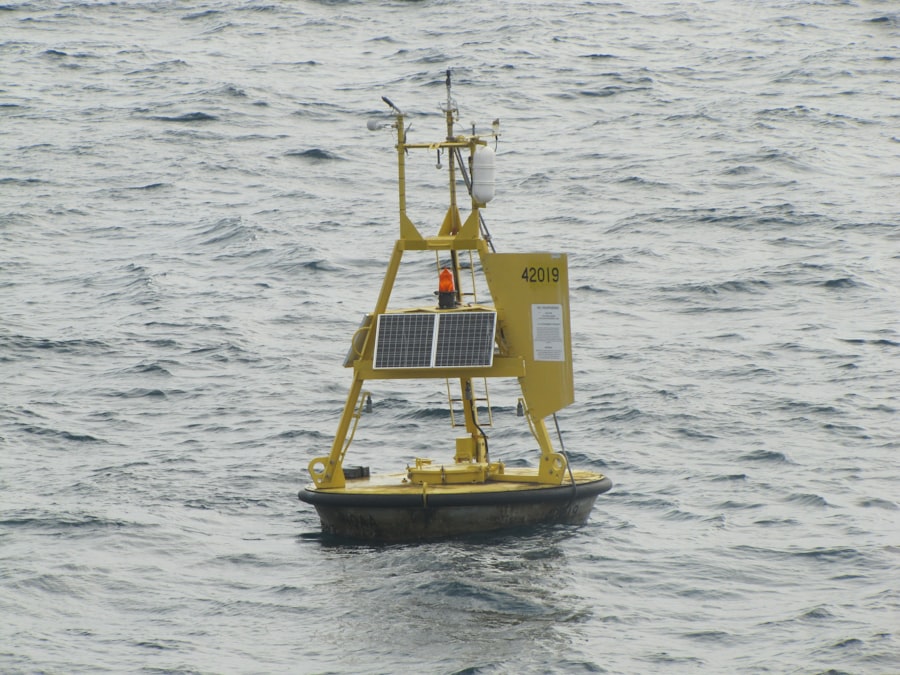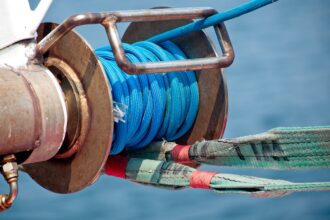Seabed sensors and fiber optics represent a significant advancement in the field of oceanography and environmental monitoring. These technologies have emerged as essential tools for scientists and researchers seeking to understand the complexities of marine ecosystems and the physical properties of the ocean. By integrating advanced sensor technology with the capabilities of fiber optics, researchers can collect real-time data from the ocean floor, providing insights that were previously unattainable.
This combination not only enhances the ability to monitor various oceanic parameters but also facilitates a deeper understanding of the intricate relationships within marine environments. The deployment of seabed sensors equipped with fiber optic technology has revolutionized the way data is gathered and transmitted from underwater environments. These sensors can measure a wide range of variables, including temperature, pressure, salinity, and even biological activity.
The use of fiber optics allows for high-speed data transmission over long distances without significant loss of signal quality. As a result, researchers can access critical information in real-time, enabling timely responses to environmental changes and fostering a more profound understanding of ocean dynamics.
Key Takeaways
- Seabed sensors and fiber optics play a crucial role in ocean monitoring by providing real-time data on various environmental parameters.
- The use of seabed sensors and fiber optics in ocean monitoring is important for understanding and predicting changes in the marine environment, including climate change impacts and natural disasters.
- Seabed sensors work by collecting data on temperature, pressure, and other environmental factors, while fiber optics transmit this data to monitoring stations onshore.
- The advantages of seabed sensors and fiber optics in ocean monitoring include their ability to provide continuous, high-resolution data, and their low maintenance requirements.
- Seabed sensors and fiber optics have applications in environmental monitoring, climate change research, marine biology, disaster prevention, and early warning systems, making them versatile tools for understanding and protecting the ocean environment.
The Importance of Ocean Monitoring
Ocean monitoring is crucial for several reasons, primarily due to the ocean’s role in regulating the Earth’s climate and supporting diverse ecosystems. The oceans cover more than 70% of the planet’s surface and are integral to global weather patterns, carbon cycling, and nutrient distribution. Understanding these processes is vital for predicting climate change impacts and managing marine resources sustainably.
As human activities continue to exert pressure on marine environments, effective monitoring becomes increasingly important to mitigate adverse effects and promote conservation efforts. Moreover, ocean monitoring plays a pivotal role in safeguarding marine biodiversity. With rising concerns over overfishing, pollution, and habitat destruction, continuous observation of ocean health is essential for implementing effective management strategies.
By utilizing advanced technologies like seabed sensors and fiber optics, researchers can gather comprehensive data that informs policy decisions and conservation initiatives. This proactive approach not only helps protect marine life but also ensures that future generations can enjoy the benefits of healthy oceans.
How Seabed Sensors and Fiber Optics Work

Seabed sensors operate by collecting data from their surrounding environment through various measurement techniques. These sensors can be designed to detect physical parameters such as temperature, pressure, and salinity, as well as chemical properties like pH levels and dissolved oxygen concentrations. The data collected by these sensors is then transmitted via fiber optic cables, which are capable of carrying large amounts of information over long distances with minimal signal degradation.
This combination allows for continuous monitoring of ocean conditions, providing researchers with a wealth of information about the underwater environment. Fiber optics work on the principle of light transmission through flexible glass or plastic fibers. When light is introduced into one end of the fiber, it travels along the length of the fiber by reflecting off its internal walls.
This method allows for high-speed data transfer without interference from electromagnetic signals, making it ideal for underwater applications where traditional communication methods may fail. By integrating fiber optics with seabed sensors, researchers can achieve real-time data transmission from remote locations on the ocean floor to research vessels or shore-based facilities, facilitating immediate analysis and response.
Advantages of Seabed Sensors and Fiber Optics in Ocean Monitoring
| Advantages | Seabed Sensors | Fiber Optics |
|---|---|---|
| Real-time monitoring | Yes | Yes |
| High accuracy | Yes | Yes |
| Long-term deployment | Yes | Yes |
| Cost-effective | Yes | Yes |
| Low maintenance | Yes | Yes |
The advantages of using seabed sensors and fiber optics in ocean monitoring are manifold. One of the most significant benefits is the ability to collect high-resolution data over extended periods. Traditional monitoring methods often rely on periodic sampling, which can miss critical events or changes in ocean conditions.
In contrast, seabed sensors provide continuous data streams that allow for real-time analysis and immediate response to environmental changes. This capability is particularly important in rapidly changing environments where timely information can make a substantial difference in management decisions. Additionally, the durability and resilience of seabed sensors make them well-suited for harsh underwater conditions.
Designed to withstand extreme pressures, temperatures, and corrosive environments, these sensors can operate effectively on the ocean floor for extended periods without requiring frequent maintenance or replacement. Coupled with fiber optics’ ability to transmit data over long distances without loss of quality, this technology enables researchers to monitor remote areas that were previously inaccessible or too costly to study. As a result, seabed sensors and fiber optics are transforming ocean monitoring into a more efficient and comprehensive endeavor.
Applications of Seabed Sensors and Fiber Optics in Environmental Monitoring
Seabed sensors and fiber optics have found numerous applications in environmental monitoring, particularly in assessing water quality and tracking changes in marine ecosystems. For instance, these technologies can be employed to monitor harmful algal blooms, which pose significant threats to marine life and human health. By detecting changes in nutrient levels or temperature that may trigger such blooms, researchers can issue timely warnings to mitigate their impacts on fisheries and coastal communities.
Furthermore, seabed sensors are instrumental in studying sediment transport and erosion processes along coastlines. By continuously monitoring sediment movement and deposition patterns, scientists can better understand how human activities such as construction or dredging affect coastal ecosystems. This information is vital for developing effective management strategies that protect vulnerable habitats while allowing for sustainable development.
The integration of fiber optics enhances these applications by ensuring that data is transmitted quickly and reliably, enabling researchers to respond promptly to emerging environmental issues.
Seabed Sensors and Fiber Optics in Climate Change Research

The impact of climate change on ocean systems is profound and multifaceted, making it imperative to monitor these changes closely. Seabed sensors equipped with fiber optics play a crucial role in climate change research by providing essential data on temperature fluctuations, sea level rise, and ocean acidification. These parameters are critical for understanding how climate change affects marine ecosystems and global weather patterns.
For example, seabed sensors can measure temperature variations at different depths in the ocean, helping scientists track heat distribution and its effects on marine life. Additionally, by monitoring changes in pH levels due to increased carbon dioxide absorption, researchers can assess the impacts of ocean acidification on coral reefs and shellfish populations. The real-time data provided by these technologies enables scientists to model future climate scenarios more accurately and develop strategies for mitigating adverse effects on marine environments.
Seabed Sensors and Fiber Optics in Marine Biology and Ecology
In marine biology and ecology, seabed sensors and fiber optics have opened new avenues for research by enabling detailed studies of species distribution, behavior, and interactions within ecosystems. For instance, these technologies can be used to monitor fish populations in real-time, providing insights into their migratory patterns and spawning behaviors. This information is invaluable for fisheries management and conservation efforts aimed at sustaining fish stocks.
Moreover, seabed sensors can facilitate studies on benthic organisms—those living on or near the ocean floor—by providing data on their habitat conditions and responses to environmental changes. By integrating fiber optics into these studies, researchers can gather extensive datasets that reveal complex ecological relationships within marine environments. This comprehensive understanding is essential for developing effective conservation strategies that protect biodiversity while promoting sustainable use of marine resources.
Seabed Sensors and Fiber Optics in Disaster Prevention and Early Warning Systems
Seabed sensors equipped with fiber optics also play a vital role in disaster prevention and early warning systems related to natural hazards such as tsunamis and underwater landslides. By continuously monitoring seismic activity and changes in water pressure along fault lines or continental slopes, these technologies can provide critical data that help predict potential disasters before they occur. For example, when seismic activity is detected near tectonic plate boundaries, seabed sensors can measure changes in water pressure that may indicate an impending tsunami.
This information can be relayed quickly through fiber optic cables to coastal communities, allowing for timely evacuations and preparedness measures. The integration of seabed sensors into disaster response frameworks enhances resilience against natural hazards by providing accurate data that informs decision-making processes.
Challenges and Limitations of Seabed Sensors and Fiber Optics
Despite their numerous advantages, seabed sensors and fiber optics face several challenges and limitations that must be addressed for optimal performance in ocean monitoring. One significant challenge is the high cost associated with deploying these technologies in remote underwater environments.
Additionally, while fiber optics offer many benefits in terms of data transmission speed and reliability, they are not immune to damage from environmental factors such as fishing activities or underwater landslides. Ensuring the integrity of these cables over time requires careful planning during deployment and ongoing maintenance efforts.
Future Developments and Innovations in Seabed Sensors and Fiber Optics
The future of seabed sensors and fiber optics holds great promise as advancements in technology continue to emerge. Innovations such as miniaturization of sensors will allow for more extensive deployment across various marine environments without significantly increasing costs. Additionally, improvements in battery technology may enable longer operational lifespans for autonomous underwater vehicles equipped with these sensors.
Furthermore, advancements in artificial intelligence (AI) could enhance data analysis capabilities by automating the interpretation of complex datasets collected from seabed sensors. This integration would enable researchers to identify patterns more efficiently and make informed decisions based on real-time information. As technology continues to evolve, the potential applications for seabed sensors and fiber optics in ocean monitoring will expand significantly.
The Future of Ocean Monitoring with Seabed Sensors and Fiber Optics
In conclusion, seabed sensors and fiber optics represent a transformative force in ocean monitoring that promises to enhance our understanding of marine environments significantly. Their ability to provide real-time data on various oceanic parameters is invaluable for addressing pressing issues such as climate change, biodiversity loss, and disaster preparedness. As technology continues to advance, the integration of these tools into research practices will undoubtedly lead to more effective management strategies aimed at preserving the health of our oceans.
The future of ocean monitoring lies in harnessing the full potential of seabed sensors and fiber optics while addressing existing challenges through innovation and collaboration among researchers worldwide. By investing in these technologies now, society can ensure a sustainable future for our oceans—one that balances human needs with ecological integrity for generations to come.
Seabed sensors and fiber optics are becoming increasingly important in underwater monitoring and communication systems. For a deeper understanding of the advancements in this field, you can read more about related technologies and their applications in the article found at this link. This resource provides insights into how these technologies are being integrated to enhance data collection and transmission in marine environments.
WATCH THIS! The Secret Russian Weapon That Terrifies NATO
FAQs
What are seabed sensors and fiber optics?
Seabed sensors are devices used to monitor and collect data from the ocean floor, while fiber optics are thin strands of glass or plastic that transmit data using light.
How are seabed sensors and fiber optics used together?
Seabed sensors can be connected to fiber optic cables to transmit data in real-time to a monitoring station on the surface. This allows for continuous monitoring of the seabed environment.
What types of data can be collected using seabed sensors and fiber optics?
Seabed sensors and fiber optics can collect data on ocean temperature, pressure, salinity, seismic activity, and marine life. This data is crucial for understanding oceanic processes and environmental changes.
What are the advantages of using seabed sensors and fiber optics for ocean monitoring?
The use of seabed sensors and fiber optics allows for continuous, real-time monitoring of the ocean floor, providing valuable data for scientific research, environmental monitoring, and offshore infrastructure maintenance.
What are some applications of seabed sensors and fiber optics?
Seabed sensors and fiber optics are used in various applications such as offshore oil and gas exploration, environmental monitoring, tsunami and earthquake early warning systems, and marine research.
Are there any challenges associated with using seabed sensors and fiber optics?
Challenges include the high cost of installation and maintenance, potential damage from marine activities, and the need for specialized equipment and expertise for deployment and data analysis.




